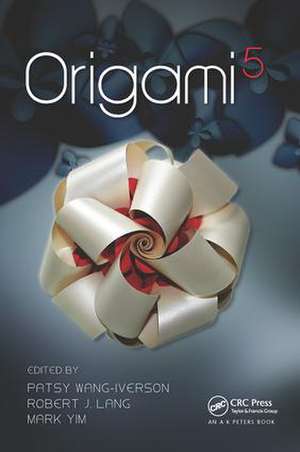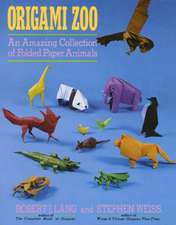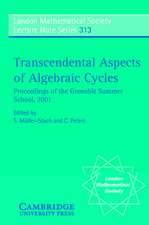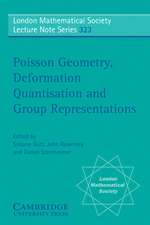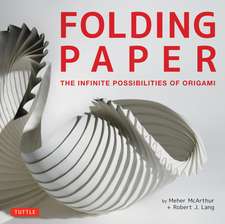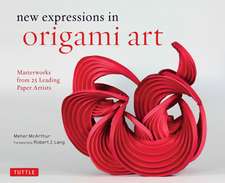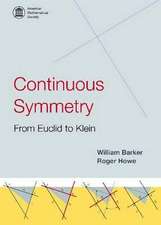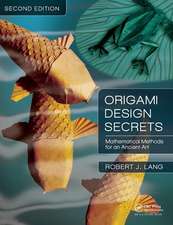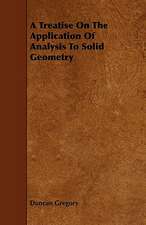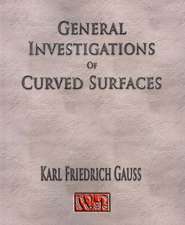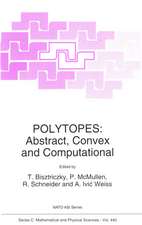Origami 5: Fifth International Meeting of Origami Science, Mathematics, and Education: AK Peters/CRC Recreational Mathematics Series
Editat de Patsy Wang-Iverson, Robert J. Lang, Mark YIMen Limba Engleză Hardback – 18 apr 2018
| Toate formatele și edițiile | Preț | Express |
|---|---|---|
| Paperback (1) | 607.17 lei 6-8 săpt. | |
| CRC Press – 21 iun 2011 | 607.17 lei 6-8 săpt. | |
| Hardback (1) | 1014.74 lei 6-8 săpt. | |
| CRC Press – 18 apr 2018 | 1014.74 lei 6-8 săpt. |
Din seria AK Peters/CRC Recreational Mathematics Series
-
 Preț: 390.88 lei
Preț: 390.88 lei -
 Preț: 393.71 lei
Preț: 393.71 lei - 8%
 Preț: 393.14 lei
Preț: 393.14 lei -
 Preț: 292.12 lei
Preț: 292.12 lei -
 Preț: 211.01 lei
Preț: 211.01 lei -
 Preț: 191.51 lei
Preț: 191.51 lei -
 Preț: 243.15 lei
Preț: 243.15 lei -
 Preț: 360.47 lei
Preț: 360.47 lei -
 Preț: 201.46 lei
Preț: 201.46 lei - 8%
 Preț: 500.83 lei
Preț: 500.83 lei -
 Preț: 184.01 lei
Preț: 184.01 lei -
 Preț: 192.32 lei
Preț: 192.32 lei -
 Preț: 223.94 lei
Preț: 223.94 lei -
 Preț: 220.61 lei
Preț: 220.61 lei -
 Preț: 359.03 lei
Preț: 359.03 lei -
 Preț: 176.05 lei
Preț: 176.05 lei -
 Preț: 242.36 lei
Preț: 242.36 lei -
 Preț: 223.47 lei
Preț: 223.47 lei -
 Preț: 317.82 lei
Preț: 317.82 lei -
 Preț: 192.53 lei
Preț: 192.53 lei - 8%
 Preț: 474.62 lei
Preț: 474.62 lei -
 Preț: 360.57 lei
Preț: 360.57 lei -
 Preț: 232.45 lei
Preț: 232.45 lei -
 Preț: 282.38 lei
Preț: 282.38 lei -
 Preț: 293.51 lei
Preț: 293.51 lei - 9%
 Preț: 570.73 lei
Preț: 570.73 lei -
 Preț: 161.37 lei
Preț: 161.37 lei -
 Preț: 238.17 lei
Preț: 238.17 lei -
 Preț: 191.94 lei
Preț: 191.94 lei - 8%
 Preț: 417.31 lei
Preț: 417.31 lei - 18%
 Preț: 1063.41 lei
Preț: 1063.41 lei - 26%
 Preț: 1042.56 lei
Preț: 1042.56 lei - 25%
 Preț: 496.94 lei
Preț: 496.94 lei - 17%
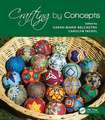 Preț: 253.55 lei
Preț: 253.55 lei -
 Preț: 285.84 lei
Preț: 285.84 lei - 8%
 Preț: 502.91 lei
Preț: 502.91 lei -
 Preț: 378.60 lei
Preț: 378.60 lei - 26%
 Preț: 933.23 lei
Preț: 933.23 lei -
 Preț: 323.21 lei
Preț: 323.21 lei - 18%
 Preț: 1217.60 lei
Preț: 1217.60 lei - 18%
 Preț: 179.93 lei
Preț: 179.93 lei -
 Preț: 324.52 lei
Preț: 324.52 lei
Preț: 1014.74 lei
Preț vechi: 1366.53 lei
-26% Nou
Puncte Express: 1522
Preț estimativ în valută:
194.17€ • 202.73$ • 160.70£
194.17€ • 202.73$ • 160.70£
Carte tipărită la comandă
Livrare economică 04-18 aprilie
Preluare comenzi: 021 569.72.76
Specificații
ISBN-13: 9781138442283
ISBN-10: 1138442283
Pagini: 676
Dimensiuni: 152 x 229 mm
Greutate: 0.45 kg
Ediția:1
Editura: CRC Press
Colecția A K Peters/CRC Press
Seria AK Peters/CRC Recreational Mathematics Series
ISBN-10: 1138442283
Pagini: 676
Dimensiuni: 152 x 229 mm
Greutate: 0.45 kg
Ediția:1
Editura: CRC Press
Colecția A K Peters/CRC Press
Seria AK Peters/CRC Recreational Mathematics Series
Cuprins
Origami History, Art, and Design: History of Origami in the East and the West before InterfusionDeictic Properties of Origami Technical Terms and Translatability. Betsy Ross Revisited: General Fold and One-Cut Regular and Star Polygons. Reconstructing David Huffman's Legacy in Curved-Crease Folding. Simulation of Nonzero Gaussian Curvature in Origami by Curved-Crease Couplets. Compression and Rotational Limitations of Curved Corrugations. Polygon Symmetry Systems. New Collaboration on Modular Origami and LED. Using the Snapology Technique to Teach Convex Polyhedra. A Systematic Approach to Twirl Design. Oribotics: The Future Unfolds. Origami in Education: Origametria and the van Hiele Theory of Teaching Geometry. Student-Teachers Introduce Origami in Kindergarten and Primary Schools. Narratives of Success: Teaching Origami in Low-Income Urban Communities. Origami and Spatial Thinking of College-Age Students. Close Observation and Reverse Engineering of Origami Models. Origami and Learning Mathematics. Hands-On Geometry with Origami. .My Favorite Origamics Lessons on the Volume of Solids. Origami Science, Engineering, and Technology: Rigid-Foldable Thick Origami. Folding a Patterned Cylinder by Rigid Origami. The Origami Crash Box. Origami Folding: A Structural Engineering Approach. Designing Technical Tessellations. A Simulator for Origami-Inspired Self-Reconfigurable Robots. A CAD System for Diagramming Origami with Prediction of Folding Processes. Development of an Intuitive Algorithm for Diagramming and 3D Animated. Hands-Free Microscale Origami. Foldable Parylene Origami Sheets Covered with Cells: Toward Applications Mathematics of Origami: Introduction to the Study of Tape Knots. Universal Hinge Patterns for Folding Orthogonal Shapes. A General Method of Drawing Biplanar Crease Patterns. A Design Method for Axisymmetric Curved Origami with Triangular Prism Protrusions. Folding Any Orthogonal Maze. Every Spider Web Has a Simple Flat
Recenzii
I will readily admit I became engaged with, even engrossed in, this seminal volume on the multifaceted aspects of the art, history, science, and engineering of origami in almost four dozen short papers astutely organized, really threaded through, four main sections. … There is plenty of mathematics learning and teaching engagingly embedded within the covers. … There’s something for virtually everyone, students and teachers alike, those mathematically or artistically inclined or interested, and those not so much. … novices and the origami-ignorant like me can find starting points to commence their own personalized explorations of this fascinating field. So, pick up this volume and begin unfolding it to reveal all its intricacies. May you find your own treasure ship or sacred crane among its pages!
—John E. Hammett III, Professor of Mathematics, Saint Peter’s University, and President, New Jersey Association of Mathematics Teacher Educators
When I first visited Japan in 1983 I was curious to learn how origami was taught and developed in Japan. … My search for a connection of origami with mathematics was not successful at that time. I wished that I could have seen a book or even some articles as they are published now in this book … Until recently, the scientific view of origami was rather underdeveloped and [these] proceedings might change this.
—Wolfgang Polasek, International Statistical Review, 2012
Origami 5 continues in the excellent tradition of its four previous incarnations, documenting work presented at an extraordinary series of international meetings that explored the connections between origami, mathematics, science, technology, education, and other academic fields. … Within this one volume, you will find a broad selection of historical information, artists’ descriptions of their processes, various perspectives and approaches to the use of origami in education, mathematical tools for origami design, applications of folding in engineering and technology, as well as original and cutting-edge research on the underpinnings of origami.
—L’Enseignement Mathematique (2) 57, 2011
… fascinating … With Origami 5 you can make everything from an origami angel to a full-sized baseball cap and learn all the associated mathematics along the way.
—Kay Gilliland, NCSM Newsletter, Winter 2011
Praise for the Previous Volume:
Wow! Fantastic book! It will create new folds in your brain whether you are an artist, scientist, inventor, educator, or simply like to be amazed. The balance between mathematical theory and manipulative practice, and between artistic and educational applications makes this a book for everyone. I look forward to using this book personally and professionally.
—Robert Root-Bernstein, Ph.D., co-author of Sparks of Genius: The Thirteen Thinking Tools of the World's Most Creative People
—John E. Hammett III, Professor of Mathematics, Saint Peter’s University, and President, New Jersey Association of Mathematics Teacher Educators
When I first visited Japan in 1983 I was curious to learn how origami was taught and developed in Japan. … My search for a connection of origami with mathematics was not successful at that time. I wished that I could have seen a book or even some articles as they are published now in this book … Until recently, the scientific view of origami was rather underdeveloped and [these] proceedings might change this.
—Wolfgang Polasek, International Statistical Review, 2012
Origami 5 continues in the excellent tradition of its four previous incarnations, documenting work presented at an extraordinary series of international meetings that explored the connections between origami, mathematics, science, technology, education, and other academic fields. … Within this one volume, you will find a broad selection of historical information, artists’ descriptions of their processes, various perspectives and approaches to the use of origami in education, mathematical tools for origami design, applications of folding in engineering and technology, as well as original and cutting-edge research on the underpinnings of origami.
—L’Enseignement Mathematique (2) 57, 2011
… fascinating … With Origami 5 you can make everything from an origami angel to a full-sized baseball cap and learn all the associated mathematics along the way.
—Kay Gilliland, NCSM Newsletter, Winter 2011
Praise for the Previous Volume:
Wow! Fantastic book! It will create new folds in your brain whether you are an artist, scientist, inventor, educator, or simply like to be amazed. The balance between mathematical theory and manipulative practice, and between artistic and educational applications makes this a book for everyone. I look forward to using this book personally and professionally.
—Robert Root-Bernstein, Ph.D., co-author of Sparks of Genius: The Thirteen Thinking Tools of the World's Most Creative People
Notă biografică
Patsy Wang-Iverson is Vice President for Special Projects at the Gabriella and Paul Rosenbaum Foundation. Introduced to origami as a child by her mother, her personal interest in origami merged in recent years with her work in helping to improve students' interest in and success with mathematics. She co-organized, with Eileen Tan and Benjamin Tan, the 2010 Fifth International Meeting on Origami in Science, Mathematics and Education (5OSME) plus a Folding Convention (PLUS!) at the Singapore Management University in Singapore. Robert J. Lang has been an avid student of origami for some forty years and is now recognized as one of the world's leading masters of the art. He is one of the pioneers of the cross-disciplinary marriage of origami with mathematics and organized the 2006 Fourth International Meeting on Origami in Science, Mathematics, and Education at Caltech. He has consulted on applications of origami to medical devices, air-bag design, and space telescopes, is the author or co-author of twelve books and numerous articles on origami and lectures widely on the connections between origami, mathematics, science, and technology.Mark Yim is a professor of mechanical engineering at the University of Pennsylvania. Previously, he was a Principal Scientist at the Palo Alto Research Center (formerly Xerox PARC). His group studies modular self-reconfigurable robots and has demonstrated robots that can transform into different shapes, jump, ride tricycles, climb stairs, poles and fences, manipulate objects and reassemble themselves. Collaborative work with researchers at Harvard, MIT and Berkeley include robotic self-folding origami. He has authored over 100 journal and conference papers and over 40 patents on topics ranging from robotics and videogame feedback devices to education and robotic performance art.
Descriere
What is the historical appeal of football? How diverse are its players, supporters and institutions throughout the world? What are its various traditions and how are these affected by pressures to modernize ? In what ways does the game help to reinforce or overcome social differences and prejudices? How can we understand football‘s subcultures, especially football hooligan ones? The 1994 World Cup Finals in the United States have again demonstrated the conflicts which exist around football over its international future. The multi-media age beckons new audiences for top-level matches, but worries remain that the historical and cultural appeal of football itself may be the real loser. The global game has a breadth of skills, playing techniques, supporting styles and ruling bodies. These are all subject to local and national traditions of team play and fan display. Modern commercial influences and international cultural links through players and fan styles, are accommodated within the game to an increasing extent. Yet, football‘s ability to differentiate remains: at local, regional, national and even continental levels. In some cases the game‘s traditions ensure that these differences are becoming as oppositional today as is modern football hooliganism. But, the overall picture is one of a game without frontiers - rich in historical and cultural detail, pluralistic in its traditions and identities. This volume brings together essays by leading academics and researchers writing on world football. Their studies draw on interdisciplinary researches in England, Scotland, France, Italy, Germany, Austria, Argentina and Australia. The book will be of interest to students of sports science, cultural studies and social science and to all those who simply enjoy football as the world's greatest sporting passion.
